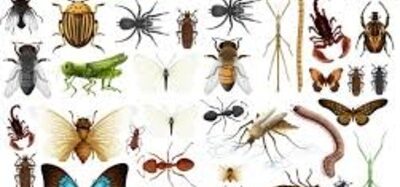Opinion Editorial
May 29, 2002
Ozone is a known cancer-causing agent. It also causes lung irritation and difficulty in breathing, especially among the very young, elderly, and those with respiratory ailments. Ozone is an unstable form or oxygen. Light rail trains generate ozone. Is there a problem?
In the atmosphere oxygen usually travels in pares of two oxygen atoms together. Chemists refer to oxygen in this form as 02. We need this type of oxygen to breathe and survive.
But sometimes nature gets confused and oxygen appears with three oxygen atoms together. This is ozone: 03; and it can kill people.
Ozone is best known for its environmentally beneficial characteristics. In the upper atmosphere it absorbs cosmic radiation, protecting humans on earth from the effects of the sun. Without the ozone layer in the upper atmosphere skin cancer rates would increase.
In the lower atmosphere ozone is a problem. Denver became a US EPA “non-attainment area” in 1978 when the ozone limit of 0.12 was exceeded. The Denver area has not exceeded the limit since 1988, and was re-designated as “attainment” on October 11, 2001. Colorado would again come under the punitive “non-attainment” rules if weather patters join with man-generated ozone to exceed the air quality limit.
Experts are generally unaware of the sources and behavior of lower atmosphere ozone. They just know that they dont want it around. Large amounts of ozone are generated by electrical storms, but it seems to dissipate quickly. Ozone is also one of the byproducts of automobile operation. Nitrous oxides combine with hydrocarbons, both auto emissions, in the presence of sunlight to yield ozone. Automobiles produce ozone indirectly when conditions are conducive. LRT produces ozone directly and constantly.
Ozone is produced in electric motors when arcing occurs. Arcing is a continuous process within these motors. Higher voltages and higher power demands yield more arcing and in turn, more ozone. Because LRT is powered by electric motors, some environmental assessment of potential affects is warranted. This question was raised in 1994 in Independence Institute issue paper: “Stop That Train” – by Mueller and Polhill.
Lets see how much has been learned in 8 years. Certainly a government concerned with the public well-being, as RTD is, can provide a factual reply. When contacted about this, RTDs Environmental Manager was unable to offer any information whatsoever or name anyone else at RTD or at any other agency with the knowledge to defuse the question.
No expert or other knowledgeable individuals or reports on outdoor ozone could be found at either the US EPA or the Federal Transit Administration. However, there was a study in Southern California of ozone generation by LRT in 1992. It was conducted by the South Coast Air Quality Management District and concluded that one 350 person light rail train produced as much ozone as 8,000 passenger cars and added 0.04 parts per million per train per hour to the ambient air along the light rail corridor. Clearly these numbers understate the problem on the basis of people moved and demonstrate a non-trivial environmental cost of LRT. None of RTDs Environmental Impact Statements has made mention of ozone as a potential problem. The fact that nearly everyone, including those who should know the most, seems oblivious should raise a red flag.
Normalizing the numbers reveals that ozone generated by light rail is at least 50 to 100 times higher than ozone generation by automobiles per person moved.
Denvers “non-attainment” limit for ozone concentrations is 0.12 ppm. Exceeding this limit at any single location carries the threat of loss of Federal funding. EPA sets environmental limits by risk assessment. In theory the 0.12 ppm limit is the level at which one person per million will die. However, not all people are affected the same. One person might contract lung cancer at the .04 ppm level and another might not contract it at all, even when exposed to a much higher level.
Higher concentrations also have more dire health implications. The human body can tolerate a low level of ozone. But once the threshold is exceeded, then the deleterious effects are compounded and magnified. That is, the problems are not arithmetically proportional. If one person per million will die at 0.12 ppm, then at 0.24 ppm more than 2 people will die. It might be 10 or 100 people or more.
Thus, two or three trains per hour in one direction could cause an ozone violation or impose substantial long-term health problems upon some individuals exposed.
RTD apologists have adopted the ostrich philosophy: “Burying your head makes all problems disappear.” Until the ozone questions are answered and to protect the health and safety of innocent citizens, all development near LRT should be prohibited and existing property owners should be warned. Though there may not yet be enough information to warrant evacuation, it is logically inconsistent to conclude that no evaluation is needed.
###
Copyright 2002, Independence Institute
INDEPENDENCE INSTITUTE is a non-profit, non-partisan Colorado think tank. It is governed by a statewide board of trustees and holds a 501(c)(3) tax exemption from the IRS. Its public policy research focuses on economic growth, education reform, local government effectiveness, and Constitutional rights.
JON CALDARA is President of the Institute.
DENNIS POLHILL is a Senior Fellow the Independence Institute
ADDITIONAL RESOURCES on this subject can be found at: www.i2i.org
NOTHING WRITTEN here is to be construed as necessarily representing the views of the Independence Institute or as an attempt to influence any election or legislative action.
PERMISSION TO REPRINT this paper in whole or in part is hereby granted provided full credit is given to the Independence Institute.







